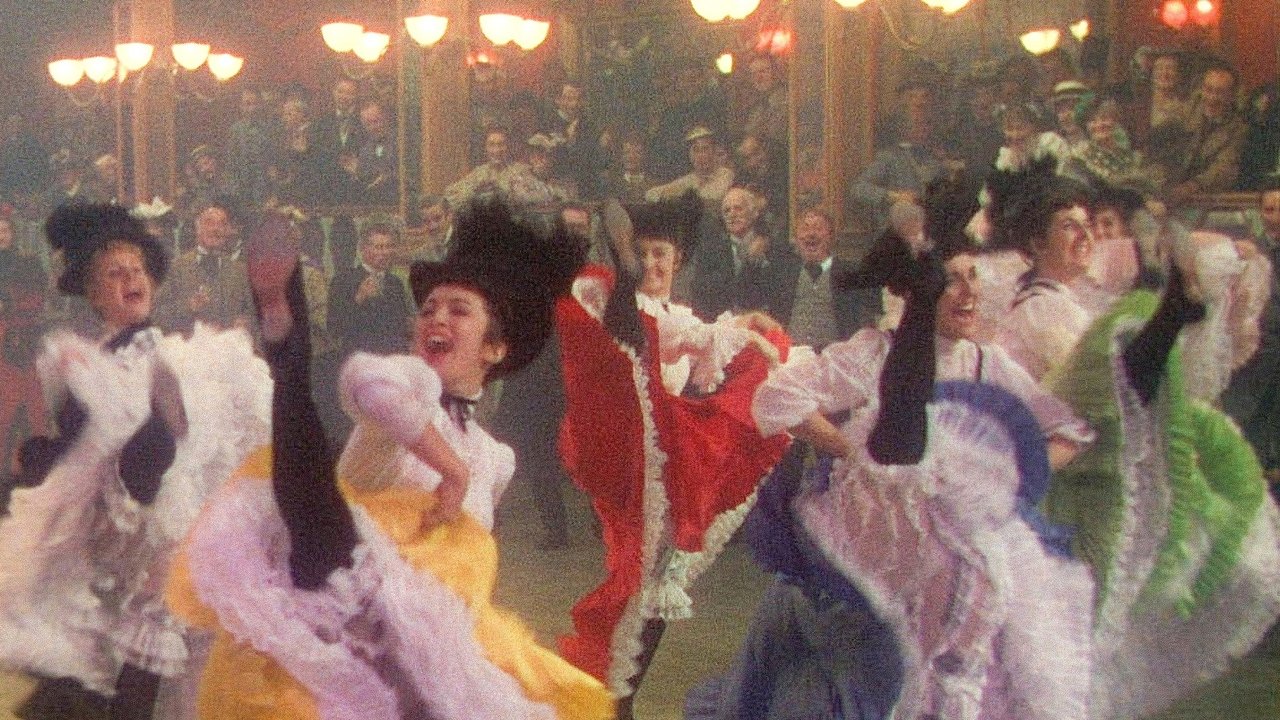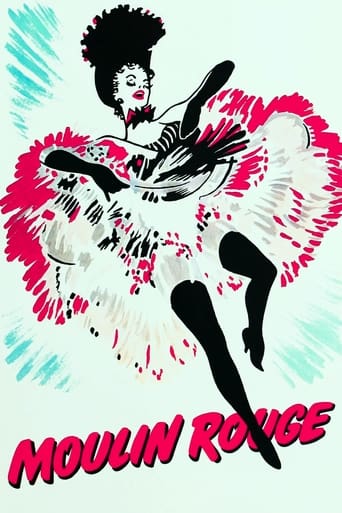

SERIOUSLY. This is what the crap Hollywood still puts out?
... View MoreGood concept, poorly executed.
... View MoreFrom my favorite movies..
... View MoreThe film was still a fun one that will make you laugh and have you leaving the theater feeling like you just stole something valuable and got away with it.
... View MoreWhether or not the film accurately portrays the life and personality of Henri de Toulouse-Lautrec correctly, one thing you certainly have to say about "Moulin Rouge" is that it is a gorgeous movie. Not surprisingly, it won two Oscars--for Best Art Direction-Set Decoration, Color and Best Costume Design, Color. I am also a bit surprised it wasn't nominated for Best Cinematography, Color--as the film was exquisitely filmed--giving it a look and color that is second to none. It also received quite a few important nominations--including Best Picture, Best Actor and Best Director (among others). So, it is clearly a standout film for the era. I also suspect that the film might have been overlooked a bit over the years since, as an even more spectacular biopic of a painter, "Lust for Life" gained even more notoriety in 1956. Both films are absolutely gorgeous.As to the life story of Lautrec, I am far pickier than most because I am a (among other things) a retired history teacher. I look for inaccuracies others might not notice. So, when I see Lautrec brooding CONSTANTLY in the film, I ask why they almost never show him smiling or acting human?! Sure, the real life character was a pathetic man in many ways, but he was a man--a three-dimensional man. Although Jose Ferrer did good in many ways, his performance lacked the fullness of a real man. He got the main and depression quite well--just not anything else. I also think that the film sanitized and over-glamorized Lautrec's relationship with one particular prostitute--whereas the real Lautrec had MANY sexual relationships--many. In the film, however, he hangs out with prostitutes and is quite chaste! Part of this, I am sure, is due to the Production Code. Sure, it was being relaxes in the 1950s--but not THAT much! Overall, a wonderful film but one that isn't perfect--but incredibly beautiful--breathtakingly so. For a great double-feature, try watching this immediately preceding or followed by "Lust for Life".By the way, I realized why they changed Lautrec's life here and there for dramatic reasons, but he never fell down the steps and broke his legs. The legs actually were very brittle and broke doing much more mundane activities--such as falling out of a chair and breaking one of them. In other words, his genetic problems caused the break and the dwarfism--not some dramatic fall.
... View MoreHuston must have been Technicolor-blinded: the film is awash in garish hues, about the only thing to recommend it. Seen the dancing girls once, you've seen them jump and yelp six or seven times. Dull script (well, Huston didn't have Dashiell Hammett as his foundation), with a flashback sequence that seems slightly ridiculous, with José Ferrer playing Lautrec AND Lautrec's father (see the virtuosity!), leaden pacing, not a single clever line. Lautrec comes across as a bearded brat, pettish and spoiled. The flash-cut sequences showing Lautrec's paintings are jumpy and amateurish and poorly timed--it's hard to believe this is the creator of The Maltese Falcon, Beat The Devil, and Treasure of the Sierra Madre. Painter loses girl, painter loses girl, painter loses girl. Nobody loves him or appreciates him, then he dies. Zsa Zsa Gabor lip-synchs bad songs badly and offers nothing as an actress except a reminder that the era required several Marilyn Monroe facsimiles. I had a difficult time staying awake, and by the time Lautrec finally closed his eyes I had long since done so myself.
... View MoreA part from the astonishing atmosphere rendered here, what would the real Toulouse-Lautrec think about being a movie star ?He was a only little known at his time, living in the creepy Montmartre of the end of 19th century. Montmartre was a bad suburb of Paris then, not only "popular", but inhabited by the poorest people living in slums, rejected or even hiding from the police. As it seems these people new about partying though, and Toulouse-Lautrec the cripple wanted to have fun ! Spending his time in places that were absolutely not suitable like the famous Moulin Rouge cabaret. Movie itself was just about to be invented. ( by two brothers: "les frères Lumière", who were closer to the "good" society of Paris)Why is the man of the brothels as great as Louis VIX the sun king or Napoleon in our cultural memory ?.(all three were very small)....Here we are facing the point that is involved by this movie: This little man, was not pretending anything, just showed us how to be simple, and glorified simple people through his art. John Hudson understands this very early, utilizing his art to glorify a man who once glorified mankind.
... View MoreThis romanticized treatment of the life of artist Henri Toulouse-Lautrec is literally one of the most colorful films ever made All the hues and colors in the palette go whizzing by in the Parisian streets, country homes, and cabarets of the late 19th century Can-Can girls in reds and blues, against a misty brown-gold backdrop, flourish their silks and feathers in the face and soul of dwarfed painter who could recreate their essence on canvas, yet never possess them physically It is the tragedy of Lautrec's (Jose Ferrer) life which bounces around the rainbow framework The cruel prostitute (Colette Marchand) to whom he gave his love and the young woman (Suzanne Flon) who befriended the artist motivate the narrative, from the crippling-fall in the home of his father to the death-fall in the dirty-looking saloon Brilliant work by Ferrer, fine support by Marchand and Flon, and the gaiety of Zsa Zsa Gabor cap the film
... View More